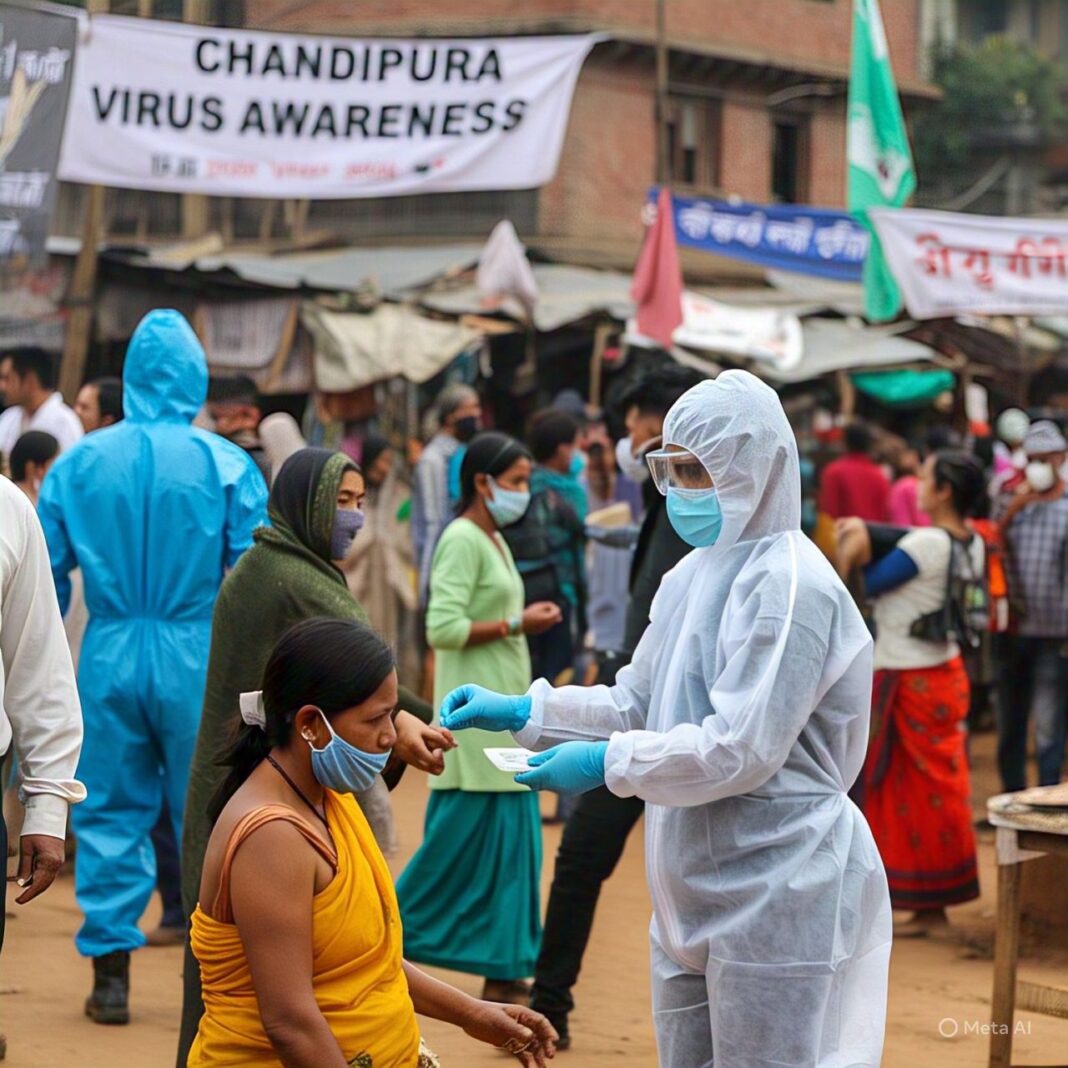The Chandipura virus (CHPV) is a neurotropic pathogen belonging to the Rhabdoviridae family, known for causing acute encephalitis syndrome (AES), a severe inflammation of the brain, particularly in young children. This virus, first identified in 1965 in the Chandipura village of Maharashtra, India, has raised concerns in neighboring Nepal due to its potential for causing serious illness and outbreaks. Understanding the history of its presence in Nepal and the factors contributing to its spread is crucial for public health preparedness.
Nepal has documented the presence of the Chandipura virus, with the first confirmed detection occurring in 2015. During epidemiological week 48 of that year, the Epidemiology and Disease Control Division (EDCD) confirmed that six out of 25 reported cases of acute encephalitis syndrome were attributable to CHPV infection. These cases were geographically distributed across the districts of Morang, Sunsari, Saptari, and Makwanpur. Prior to this official confirmation, a suspected outbreak in Morang in 2014 resulted in the deaths of 12 individuals, with the Chandipura virus identified as the likely cause after samples were sent abroad for laboratory testing. While there have been no official reports of Chandipura virus cases in Nepal since 2015, public health experts emphasize that the risk of its re-emergence remains a significant concern.
Several factors contribute to the potential for Chandipura virus outbreaks in Nepal. The country shares a long and porous border with India, where the virus is endemic and has caused significant outbreaks, including the largest in the past two decades in 2024. The movement of people across this border increases the risk of the virus being introduced into Nepal. Furthermore, the primary vectors responsible for transmitting the virus, namely sandflies (Phlebotomus species) and mosquitoes (Aedes aegypti), are prevalent in Nepal. Sandflies are particularly abundant in the Terai region, where visceral leishmaniasis, another sandfly-borne disease, is endemic. The observed expansion of visceral leishmaniasis to hilly and even Himalayan regions suggests a potentially wider distribution of sandflies, increasing the geographical area at risk for CHPV transmission. Notably, Chandipura virus outbreaks often coincide with the monsoon season, a period that favors the proliferation of these insect vectors.
The symptoms of Chandipura virus infection typically manifest rapidly and include a sudden onset of high fever, accompanied by vomiting, an altered mental state characterized by confusion or drowsiness, and convulsions. Patients may also experience diarrhea and neurological deficits. In severe cases, the infection can progress quickly to coma and even death, often within 48 hours of the onset of symptoms. Children under the age of 15 are particularly susceptible to severe complications from this virus. The case fatality rate associated with Chandipura virus infection is alarmingly high, ranging from 56% to 75% in past outbreaks, underscoring the seriousness of this public health threat.
Preventing Chandipura virus infection relies heavily on avoiding bites from infected sandflies and mosquitoes. Recommended preventive measures include the use of insect repellents containing DEET or picaridin on exposed skin, wearing protective clothing such as long sleeves and pants, especially during the evening when these vectors are most active, and using bed nets, ideally treated with insecticides, particularly in rural areas. Maintaining proper sanitation and ensuring effective waste disposal are also crucial steps in reducing the breeding grounds for these vectors. Given the potential for re-emergence in Nepal, continued public health surveillance and robust vector control measures are essential. Currently, there is no specific antiviral treatment or vaccine available for Chandipura virus infection, and medical management focuses on providing supportive care to alleviate symptoms and prevent complications.
In conclusion, while official reports of Chandipura virus in Nepal have been absent since 2015, the historical presence of the virus, coupled with its endemicity and recent outbreaks in neighboring India, necessitates continued vigilance. Raising public awareness about the symptoms and preventive measures is crucial, particularly among populations in high-risk areas such as the Terai region. Experts have suggested the need for active surveillance and baseline studies in both human and animal populations to better understand the potential risk and prepare for future outbreaks. Early recognition of symptoms and prompt medical attention, especially for children presenting with acute encephalitis syndrome, are vital for improving outcomes in the event of future Chandipura virus infections in Nepal. Sources used in the report







